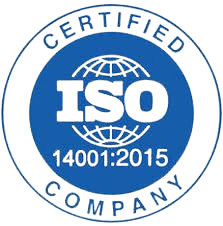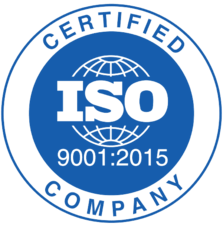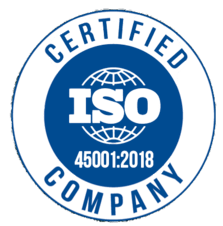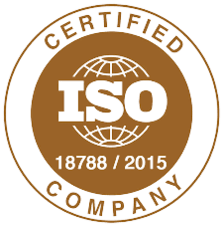
This entry indicates that the account Depreciation Expense is being debited for $10,000 and the account Accumulated Depreciation is being credited for $10,000. Assume that on January 1, 2019, Kenzie Company bought a printing press for $54,000. Kenzie pays shipping costs of $1,500 and setup costs of $2,500, assumes a useful life of five years or 960,000 pages. Based on experience, Kenzie Company anticipates a salvage value of $10,000. Mary Girsch-Bock is the expert on accounting software and payroll software for The Ascent. Assets that don’t lose their value, such as land, do not get depreciated.
- Accumulated depreciation is a contra-asset account, meaning its natural balance is a credit that reduces its overall asset value.
- The cost depletion method takes into account the basis of the property, the total recoverable reserves, and the number of units sold.
- We also address some of the terminology used in depreciation determination that you want to familiarize yourself with.
- Our PRO users get lifetime access to our depreciation cheat sheet, flashcards, quick tests, quick test with coaching, business forms, and more.
- If you want to invest in a publicly-traded company, performing a robust analysis of its income statement can help you determine the company’s financial performance.
- To demonstrate this, let’s assume that a retailer purchases a $70,000 truck on the first day of the current year, but the truck is expected to be used for seven years.
Loans are also amortized because the original asset value holds little value in consideration for a financial statement. Though the notes may contain the payment history, a company only needs to record its currently level of debt as opposed to the historical value less a contra asset. It is important to note, however, that not all long-term assets are depreciated.
Advantages of Declining Balance Method of Depreciation
The company would be able to take an additional $10,000 in depreciation over the extended two-year period, or $5,000 a year, using the straight-line method. Any mischaracterization of asset usage is not proper GAAP and is not proper accrual accounting. Applying this to Liam’s silk-screening https://online-accounting.net/ business, we learn that he purchased his silk-screening machine for $5,000 by paying $1,000 cash and the remainder in a note payable over five years. Following GAAP and the expense recognition principle, the depreciation expense is recognized over the asset’s estimated useful life.
The company then paid $2,000 to transport the equipment to its location. Finally, the company paid $5,000 to get the equipment in working condition. The company will record the equipment in its general ledger calculate markup account Equipment at the cost of $17,000. For example, a business may buy or build an office building, and use it for many years. The original office building may be a bit rundown but it still has value.
Calculating amortization and depreciation using the straight-line method is the most straightforward. You can calculate these amounts by dividing the initial cost of the asset by the lifetime of it. Instead of realizing a large one-time expense for that year, the company subtracts $1,500 depreciation each year for the next five years and reports annual earnings of $8,500 ($10,000 profit minus $1,500). This calculation gives investors a more accurate representation of the company’s earning power. To counterpoint, Sherry’s accountants explain that the $7,500 machine expense must be allocated over the entire five-year period when the machine is expected to benefit the company. If you want to invest in a publicly-traded company, performing a robust analysis of its income statement can help you determine the company’s financial performance.
Calculating Depreciation Using the Sum-of-the-Years’ Digits Method
In this case, the asset account stays recorded at the historical value but is offset on the balance sheet by accumulated depreciation. Accumulated depreciation is subtracted from the historical cost of the asset on the balance sheet to show the asset at book value. Book value is the amount of the asset that has not been allocated to expense through depreciation. Companies take depreciation regularly so they can move their assets’ costs from their balance sheets to their income statements.
So, in this depreciation method, equal expense rates are assigned to each unit of production, meaning that depreciation is based on output capacity rather than number of years. There are two steps you’ll need to go through to calculate units of production depreciation. Tax depreciation is the depreciation expense listed by a taxpayer on a tax return for a tax period. Tax depreciation is a type of tax deduction that tax rules in a given jurisdiction allow a business or an individual to claim for the loss in the value of tangible assets. By deducting depreciation, tax authorities allow individuals and businesses to reduce the taxable income.
How Depreciation is Calculated
For example, an oil well has a finite life before all of the oil is pumped out. Therefore, the oil well’s setup costs can be spread out over the predicted life of the well. That means that the same amount is expensed in each period over the asset’s useful life. Assets that are expensed using the amortization method typically don’t have any resale or salvage value.

The asset will lose more of its book value during the early periods of its lifespan. This method is used only when calculating depreciation for equipment or machinery, the useful life of which is based on production capacity rather than a number of years. Double declining depreciation is a good method to use when you expect the asset to lose its value earlier rather than later. Compared with the straight-line method, it doubles the amount of depreciation expense you can take in the first year.
In other words, depreciation expense does not represent an actual cash flow for a business. The accumulated depreciation is equal to the sum of the incurred depreciation expenses. The depreciated cost can also be calculated by deducting the sum of depreciation expenses from the acquisition cost. Although the two terms look similar, depreciated cost and depreciation expense come with very different meanings and should not be confused with one another. The depreciation expense refers to the value depreciated during a certain period.
AccountingTools
The two most common ways to determine the depreciation are straight-line and accelerated methods. The depreciated cost can be used as an asset valuation tool to determine the useful value of an asset at a specific point in time. It can be compared with the market value to examine whether there is an impairment to the asset. If an asset is sold, the depreciated cost can be compared with the sales price to report a gain or loss from the sale. This method requires you to assign all depreciated assets to a specific asset category. An updated table is available in Publication 946, How to Depreciate Property.
These 4 Measures Indicate That Burelle (EPA:BUR) Is Using Debt Extensively – Simply Wall St
These 4 Measures Indicate That Burelle (EPA:BUR) Is Using Debt Extensively.
Posted: Thu, 07 Sep 2023 04:17:07 GMT [source]
For example, the machine in the example above that was purchased for $500,000 is reported with a value of $300,000 in year three of ownership. Again, it is important for investors to pay close attention to ensure that management is not boosting book value behind the scenes through depreciation-calculating tactics. But with that said, this tactic is often used to depreciate assets beyond their real value. Depreciation expense is recorded on the income statement as an expense and represents how much of an asset’s value has been used up for that year. Accumulated depreciation totals depreciation expense since the asset has been in use.
These are straight-line, declining balance, double-declining balance, sum-of-the-years’ digits, and unit of production. Value investors and asset management companies sometimes acquire assets that have large upfront fixed expenses, resulting in hefty depreciation charges for assets that may not need a replacement for decades. This results in far higher profits than the income statement alone would appear to indicate.
Another type of fixed asset is natural resources, assets a company owns that are consumed when used. These assets are considered natural resources while they are still part of the land; as they are extracted from the land and converted into products, they are then accounted for as inventory (raw materials). Natural resources are recorded on the company’s books like a fixed asset, at cost, with total costs including all expenses to acquire and prepare the resource for its intended use. When analyzing depreciation, accountants are required to make a supportable estimate of an asset’s useful life and its salvage value. Recall that determination of the costs to be depreciated requires including all costs that prepare the asset for use by the company.
For example, Company A purchases a building for $50,000,000, to be used over 25 years, with no residual value. The annual depreciation expense is $2,000,000, which is found by dividing $50,000,000 by 25. In theory, depreciation attempts to match up profit with the expense it took to generate that profit.
Declining Balance Depreciation
In our example, the total depreciation will be $48,000, even though the sum-of-the-years-digits method could take only two or three years or possibly six or seven years to be allocated. Additionally, both sets of standards require that the cost of the asset be recognized over the economic, useful, or legal life of the asset through an allocation process such as depreciation. However, there are some significant differences in how the allocation process is used as well as how the assets are carried on the balance sheet. However, depreciation expense is not permitted to take the book value below the estimated salvage value, as demonstrated in the following text.
On the other hand, for tax purposes, depreciation is considered as a tax deduction for the recovery of the costs of assets employed in the company’s operations. Thus, depreciation essentially reduces the taxable income of a taxpayer. The tax deductions are generally available to both individuals and organizations. The tax rules regarding depreciation deductions may significantly vary among tax jurisdictions.





